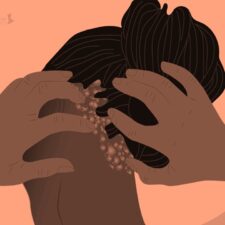
UPDATE as of 9:34am EST 4/29/19: Despite reports, director and writer, John Singleton is still alive, contrary to reports Monday morning, but it does not look good.
John's publicist told TMZ.com the famed director is alive and on life support at Cedars-Sinai Medical Center in L.A. It's being reported that John is still in a medically-induced coma and is non-responsive and not getting better.
Earlier in April, the Oscar-nominated director and writer of “Boyz N’ the Hood,” suffered a stroke.
Singleton checked himself into the hospital earlier this week after experiencing pain in his leg. According to TMZ, which broke the news, Singleton had been on a flight from Costa Rica back to the U.S., which may have contributed to the incident. The stroke has been characterized by doctors as “mild.”
Singleton’s family released a statement Saturday afternoon confirming his hospitalization.
“John is currently in the ICU and under great medical care,” the family statement said. “We ask that privacy be given to him and our family at this time and appreciate all of the prayers that have been pouring in from his fans, friends, and colleagues.”
Heart disease is the No. 1 killer for all Americans, and stroke is also a leading cause of death. As frightening as those statistics are the risks of getting those diseases are even higher for African-Americans.
In any given year, 100,000 African-Americans will have a stroke, and stroke is the third leading cause of death in the African-American community. If you are African-American, it’s important to get the facts about your stroke risk and learn how you can minimize risk factors.
Overall, African-Americans suffer more strokes than any other group of people.
Some of the following risk factors are why we suffer so much from stroke. Some factors are inherited, others are lifestyle-related and easier to change.
High blood pressure. This is risk factor number one for stroke, and up to 40 percent of African-Americans have the condition.
Obesity. Nearly 63 percent of African-American men are overweight or obese, and that number jumps to just over 77 percent for women.
Diabetes. African-Americans are also more likely to have diabetes than Caucasians.
Tobacco use. Almost 28 percent of African-Americans use tobacco, one risk factor that can be reduced or eliminated by stopping the use of tobacco products or never starting in the first place.
Sickle cell anemia. The blood disease sickle cell anemia is a condition that primarily affects African-Americans. A stroke can occur if sickle- or abnormally-shaped blood cells create a blockage in a blood vessel.








